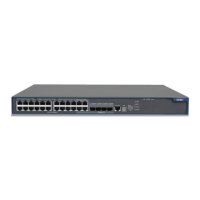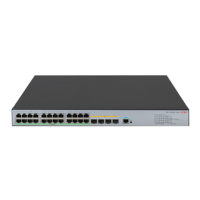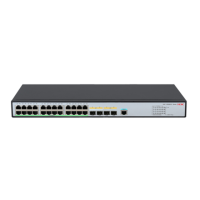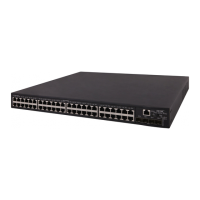3-25
No Task Remarks
4
Power on the
IRF members
—
5
Install interface
modules
For details, see Installing an Interface Module.
6
Configure
software for the
IRF members
For details about the IRF function, see IRF Configuration in the System
Volume of the H3C S5500-EI Series Ethernet Switches Operation
Manual.
7
Power off the
switches
—
8
Connect the
cables
Use cables to connect 10 G ports of the interface modules:
z The given XFP ports work with XFP optical transceivers and fibers
z The given SFP+ ports can work with SFP+ optical transceivers and
fibers for long-haul transmission; or they can be directly connected
through dedicated SFP+ cables for short-haul transmission
z The given CX4 ports use dedicated CX4 cables for connection
For details about the cable connection, refer to
Installing Dedicated
CX4/SFP+ Cable
.
9
Power on the
switches
Finish establishing an IRF
Drawing a Plan for an IRF with Switches
Before implementing an IRF of switches, draw a plan according to actual conditions of the user network
and network devices and take the following points into consideration:
Determine the number of IRF members and the bandwidth
You can determine the number of IRF members and the bandwidth according to the network scale.
The S5500-EI series support aggregation of the 10 GE ports. You can assign the two 10 GE ports of an
interface module to an aggregation group to expand the bandwidth for the IRF.
10 GE ports of different interface modules cannot join the same aggregation group in the IRF. Therefore,
1-port XFP interface modules do not support port aggregation in the IRF.
Select the proper interface modules and cables
You can select the interface modules and cables according to the distance between devices in the IRF.
For long-distance connections, use XFP or SFP+ optical modules and fibers to connect the devices; for
short-distance connections, use LSPM1CX2P or LSPM2SP2P with CX4 or SFP+ cables to connect the
devices. For details, see
Optional Interface Modules.
Configure the physical connection mode
IRF supports two physical connection modes: daisy chain connection and ring connection.

